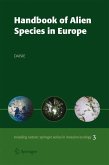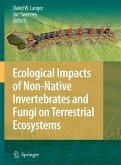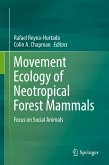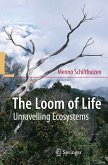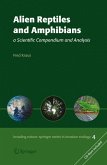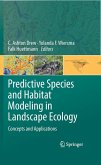Conceptual Ecology and Invasion Biology: Reciprocal Approaches to Nature (eBook, PDF)
Redaktion: Cadotte, Marc W.; Fukami, Tadashi; McMahon, Sean M.


Alle Infos zum eBook verschenken

Conceptual Ecology and Invasion Biology: Reciprocal Approaches to Nature (eBook, PDF)
Redaktion: Cadotte, Marc W.; Fukami, Tadashi; McMahon, Sean M.
- Format: PDF
- Merkliste
- Auf die Merkliste
- Bewerten Bewerten
- Teilen
- Produkt teilen
- Produkterinnerung
- Produkterinnerung

Hier können Sie sich einloggen

Bitte loggen Sie sich zunächst in Ihr Kundenkonto ein oder registrieren Sie sich bei bücher.de, um das eBook-Abo tolino select nutzen zu können.
In this edited volume, global experts in ecology and evolutionary biology explore how theories in ecology elucidate the processes of invasion, while also examining how specific invasions inform ecological theory. This reciprocal benefit is highlighted in a number of scales of organization: population, community and biogeographic. The text describes example invaders in all major groups of organisms and from a number of regions around the globe.
- Geräte: PC
- ohne Kopierschutz
- eBook Hilfe
- Größe: 10.65MB
![Handbook of Alien Species in Europe (eBook, PDF) Handbook of Alien Species in Europe (eBook, PDF)]() Delivering Alien Invasive Species Inventories for Europe (DAISIE)Handbook of Alien Species in Europe (eBook, PDF)161,95 €
Delivering Alien Invasive Species Inventories for Europe (DAISIE)Handbook of Alien Species in Europe (eBook, PDF)161,95 €![Ecological Impacts of Non-Native Invertebrates and Fungi on Terrestrial Ecosystems (eBook, PDF) Ecological Impacts of Non-Native Invertebrates and Fungi on Terrestrial Ecosystems (eBook, PDF)]() Ecological Impacts of Non-Native Invertebrates and Fungi on Terrestrial Ecosystems (eBook, PDF)73,95 €
Ecological Impacts of Non-Native Invertebrates and Fungi on Terrestrial Ecosystems (eBook, PDF)73,95 €![Biological invaders in inland waters: Profiles, distribution, and threats (eBook, PDF) Biological invaders in inland waters: Profiles, distribution, and threats (eBook, PDF)]() Biological invaders in inland waters: Profiles, distribution, and threats (eBook, PDF)161,95 €
Biological invaders in inland waters: Profiles, distribution, and threats (eBook, PDF)161,95 €![Movement Ecology of Neotropical Forest Mammals (eBook, PDF) Movement Ecology of Neotropical Forest Mammals (eBook, PDF)]() Movement Ecology of Neotropical Forest Mammals (eBook, PDF)113,95 €
Movement Ecology of Neotropical Forest Mammals (eBook, PDF)113,95 €![The Loom of Life (eBook, PDF) The Loom of Life (eBook, PDF)]() Menno SchilthuizenThe Loom of Life (eBook, PDF)113,95 €
Menno SchilthuizenThe Loom of Life (eBook, PDF)113,95 €![Alien Reptiles and Amphibians (eBook, PDF) Alien Reptiles and Amphibians (eBook, PDF)]() Fred KrausAlien Reptiles and Amphibians (eBook, PDF)177,95 €
Fred KrausAlien Reptiles and Amphibians (eBook, PDF)177,95 €![Predictive Species and Habitat Modeling in Landscape Ecology (eBook, PDF) Predictive Species and Habitat Modeling in Landscape Ecology (eBook, PDF)]() Predictive Species and Habitat Modeling in Landscape Ecology (eBook, PDF)177,95 €
Predictive Species and Habitat Modeling in Landscape Ecology (eBook, PDF)177,95 €-
-
-
Dieser Download kann aus rechtlichen Gründen nur mit Rechnungsadresse in A, B, BG, CY, CZ, D, DK, EW, E, FIN, F, GR, HR, H, IRL, I, LT, L, LR, M, NL, PL, P, R, S, SLO, SK ausgeliefert werden.
- Produktdetails
- Verlag: Springer Netherlands
- Seitenzahl: 487
- Erscheinungstermin: 19. Juli 2006
- Englisch
- ISBN-13: 9781402049255
- Artikelnr.: 37346316
- Verlag: Springer Netherlands
- Seitenzahl: 487
- Erscheinungstermin: 19. Juli 2006
- Englisch
- ISBN-13: 9781402049255
- Artikelnr.: 37346316
- Herstellerkennzeichnung Die Herstellerinformationen sind derzeit nicht verfügbar.

